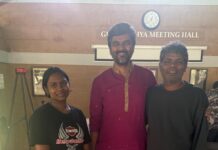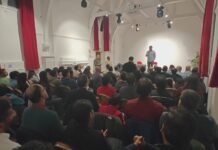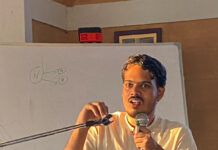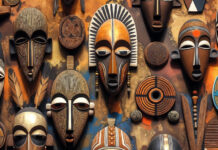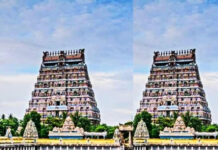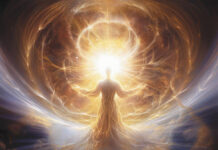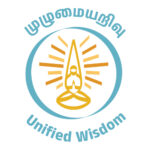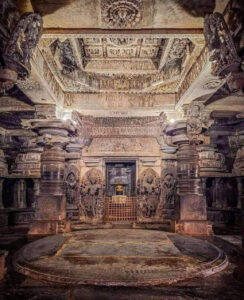
Evolution of Religions
The evolution of religions worldwide is generally established. Amongst that, Natural Religions have some commonalities. Their origins go back to ancient times and derived from tribal life. All over the world, the tribals have their deities and rituals. These are generally said to have three fundamentals.
- Ancestor Worship, Elder Worship
- Totem Worship
- Nature Worship
Anthropologists have created these divisions. However, it is impossible to understand the spirituality of the tribals based on these divisions. As an example, tribals worship their departed ancestors. Anthropologists consider that as yet another simple belief. But it is not as simple as that.
The recorded conversations with the tribals reveal their philosophies. It is a common belief that before birth, humans live somewhere and return after death. That is, Man lives as an idea. That idea becomes matter. After death, it becomes an idea again.
If so, then what do they worship? They worship humans as an idea. It is not fear of death. Nor is it done without understanding death. It is an effort to attain the essence of an idea from something tangible.
That is how they began worshipping the dead. Then, they associated the dead with a single idea. United all humans into a conceptual giant man and established it as a grand statue. That is ‘Perumal’ [perum (big) + aal (man)], a giant man or the Parampurusha. Man-kind as an idea is found in ancient religions such as Sankhya.
Tribal people worshipped everything they intuitively believed to hold divine powers and converted them as symbols for these clans. Animals such as snakes, elephants, and tigers; Landforms like mountains, oceans, and rivers; and occurrences like lighting, thunder, and storms became the symbols. Note that the tribals did not worship nature but the deity residing in nature. Even darkness and sickness were considered divine manifestations.
“If there is God, then it is only in manifestations they appear before man” – can be considered as a proper religious belief. Worldwide, this has been the case for all people.
When institutions and philosophies formed for the tribal worship methods, they gradually became cults. Cults with similar tendencies united. They continued to unite and grow. In olden times, they were called the Dharma, the Way, or the Norm. Today, we call them Religions.
Its development is similar to that of the formation of a river. A spring gradually becomes a small stream. More streams join in, and then rivulets unite. All these propel us forward as a whole. We can symbolize the first spring but never rightly identify it. Ganges exists even before the Gangotri. As the river grows large, tributaries emerge. The same occurs for religions, and great religions continue to divide.
At the crossroads of every century, natural Religions worldwide have amalgamated new sub-religions and let go of their branches. The names of religions constantly change over time, and even whole structures transform.
It makes no sense to deny the river Kaveri standing on its shores at Srirangam and refuting that Kaveri does not flow in Karnataka but is present as Harangi, Kabini, and Suvarna. Is it accurate to state that after Erode, Bhavani flows independently? For Trichy, Noyyal and Amaravathi still flow as Kaveri. In East-Tanjore, the Vennaaru tributary separates from Kaveri and breaks into more tributaries. All of that is collectively identified as the Kaveri River basin.
There are two reasons for the continuous amalgamation of religions. Whenever possible, the olden societies chose to include others and grew big as it symbolized strength. When the two tribes united, their belief systems also merged. When two societies united, their deities became one.
It is not exploitation or domination. Neither is it any conspiracy or manipulation. It may seem so for those filled with hatred. But people who read a little history and sociology know this is the natural course of human social evolution.
The book, “The Origin and Development of Vaiṣṇavism” by Suvira Jaiswal has a Marxist approach. It explains how different deities like Vishnu, Narayanan, Thirumal, Pradyumna, Aniruddha, Shankarshan, Balarama, Parasurama, Rama, and Krishna united over time to become the Vaishnavism we know today.
It is similar to Shaivism as well. Deities like Rudra from Vedas, Pasupathi from tribal communities, lingam worship, pillar worship, mountain worship, and fire worship combined to become the Shaivism we see today.
We may state a spiritual reason for this unification. When man realizes the essence of the universe as individual wisdom, individual religions sprout. Individual wisdom combines and progresses towards unified wisdom.
All knowledge streams form similarly. How does physics comprehend the universe? The knowledge about the universe comes from the ideas of many scientists like Newton, Einstein, Oppenheimer, and Richard Feynman. Similarly, wise men and scholars grasp the various dimensions of philosophical wisdom. Continuous debates and syntheses of this wisdom are established as theology.
We can understand the evolution of this synthesis through the metaphor of deities. Pradyumna, Aniruddha, Shankarshan, and Balarama became the forms of Vishnu. It is the same as different philosophies integrating and becoming one. Then, Rama’s and Krishna’s images became synonymous with Vishnu. At a point, even Shiva & Vishnu became one. Avatars such as Harihara, Sankarnarayana, Sivarama, and Shankarrama came into existence.
We can go back in time to get a better understanding. The metaphor of Shivashankar can break into Shiva and Vishnu. Vishnu can split into many. Balarama is one among the many forms of Vishnu. With this background, an examination of the origin of Balarama can be done. It is a deity worshipped by agricultural communities in yore. Balarama holding a Plow on his shoulder is similar to a farmer. His image became the metaphor of all farmers in one human form. If we research more extensively, we may discover a pantheon of similar deities.
That is a historical approach. With the history of symbols, we can deduce societal history. Inferences about the history of religious evolution can be made as well. Alternatively, if a person bellows, “Oh, they have made Balarama Vishnu, that is oppression,” who is he? What is his intention if he protests to differentiate Balarama from Vishnu?
One, he is a fraud. A fanatic with intentions who wants to divide and rule or a servant of such experts. Or a fool deceived by such people.
Prophetic Religions also have evolved. The prophet collates the existing religious views and creates a core based on his vision. With time, it develops slowly into a religion by his students and followers. When they interpret the vision of the first prophet based on their understanding, factions form within the religion. As scholars emerge, the religion keeps branching out.
In India, Jainism has two sects – Svetambara and Digambara. There are a lot of factions within them. Two hundred years after Buddha during the period of Mahākāśyapa, Buddhism split into Theravada (Sthavira nikāya, nilai marabu) or Hinayana and Mahayana (Grand tradition or peru marabu). The fragmentation continued till a new tradition called ‘Vajrayana’ arose in India. This tradition now remains in Tibet. The most recent sect in Buddhism is ‘Navayana’ formed by Dr. Ambedkar. That is the evolution process of religions.
Natural & Prophetic Religions
The origin of Prophetic Religions can be attributed to the prophets. It is impossible to trace the origins of Natural Religions. Since they stem from ancient times, they are full of beliefs, symbols, rituals, and traditions of early tribal life. Natural Religions can move forward only by reviving these traditions. They also remain flexible, allowing for elaborations with a space to absorb new sects.
Both Natural and Prophetic Religions have their share of problems and negative aspects. Natural Religions tend to hold primitive and orthodox customs. Example – Hindu Rituals for the dead. Beliefs like killing a chicken and putting it along with the dead in the pyre if the person died on a Saturday. If we start looking for its roots, we might have to look at the period before man began cooking food.
It is hard to differentiate and identify customs that are obsolete and harmful and those that are unavoidable. Wise men can take up this task. Even they can not bring about the changes quickly. Obsolete customs remain deeply rooted because of their primitivity. So, there should always be a constant struggle within these religions. From Ramanuja to Vallalar, Kabir to Gandhi, these struggles continue to exist within Hinduism.
On the other hand, Prophetic Religions may seem to be more logical and modern. But their main drawback is their conviction that what they say is the truth. Only theirs is the only God. All other religions and belief systems are wrong and ought to be destroyed. Believers of other religions are sinners or fools, and they have to be redeemed. It was the Prophetic Religions that triggered great religious wars all over the world. Genocide in Africa, South America, and Australia were the result of these wars. The inquisitions of medieval Europe were more brutal than the Holocaust of Hitler and the Siberian concentration camps of Stalin. The Goa Inquisition has happened even in India.
Natural Religions should constantly fight against their orthodox customs and Prophetic Religions against their stubborn convictions. Natural Religions are flexible and inclusive. These tendencies have to be maintained, and they should not become rigid. If it happens, then Natural Religions will turn oppressive and stagnant as a remnant of primitive customs. Prophetic Religions have firm structures. If they do not become flexible, they can become dominant and oppressive. Saints and reformers should emerge within these religions to modernize and expand them. The value of a religion should be measured based on these.
For the past three hundred years, Natural Religions have been considered a collection of only primitive traditions and customs. They have been a target and are ruthlessly destroyed all over the world. Most of the world’s Natural Religions are extinct because of this. The ancient traditions and their cultural symbols disappeared. Traditional knowledge and philosophical wisdom stored as symbols and images also vanished.
A Natural Religion like Hinduism has two boundaries. On one end, it is an age-old tribal religion. It has ancient rituals, beliefs, and customs. On the other end, it is a purely philosophical religion. An incident where Narayana Guru bows to the priest of a village deity gets documented with a picture. These are the two extremities of Hinduism. One is a tribal traditionalist, and the other is a pure Vedanti. Both are Hindus.
Philosophical scholars and saints constantly question the age-old beliefs, rituals, and practices of the tribal tradition. On one plane, they renew those rituals and customs while eliminating the outdated ones. On another plane, they take some of those rituals and practices and convert them into symbols of philosophy and wisdom.
From Sankara to Gandhi, Thirumular to Vallalar, all worked on implementing these two changes. It has been the reason why Hinduism persists. Wise men such as them are the sole reason for the reformation and philosophical advancements in Hinduism. There has never been a period without them, and they will continue to arise.
So, if a person convinces us that the Hindu religion consists only of some orthodox traditions and customs, then to tell the truth, he is disrespecting our saints like Sankara to Gandhi. Belittles Thirumular and Vallalar. His religious fanaticism or political agenda could be the reason. If we listen to such discussions, we demean ourselves. More than that, we humiliate our ancestors and saints. That means we secure great sin for our future generations.
(Continued)
Translated By Nikitha Chandrasekar


